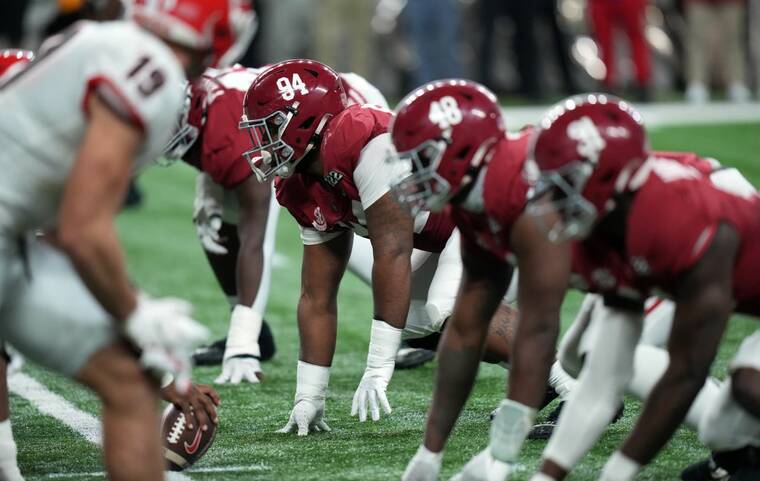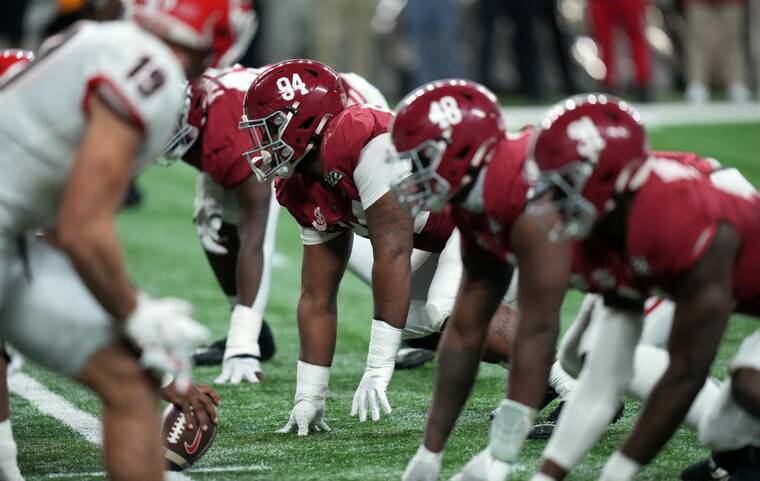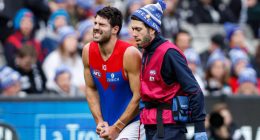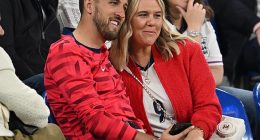
Since its founding, the NCAA has operated with a business model that defined the college athlete as an amateur. Over the years, as college sports evolved into a mega-enterprise, lawsuits and labor actions chipped away at that model, which came to be increasingly seen as exploitative in big-money sports like football and men’s basketball.
But the NCAA’s $2.8 billion settlement on Thursday night in a class-action antitrust lawsuit represents the heaviest blow — and perhaps a decisive one — to that system.
If approved by a U.S. district judge in California, the settlement would allow for the creation of the first revenue-sharing plan for college athletics, a landmark shift in which schools would directly pay their athletes for playing.
This sea change, though, also carries its own questions, according to critics. Those include whether women would be compensated fairly, whether smaller conferences would bear a disproportionate burden of the settlement and whether this framework would do anything to limit the power of collectives — the booster-funded groups that entice players with payments to hopscotch from school to school.
“It’s both a historic and deeply flawed agreement,” said Michael H. LeRoy, a law professor at the University of Illinois. “The idea that schools are paying millions of dollars to the people who are selling the TV contracts and filling the seats — that’s good. But it closes one Pandora’s box and opens four or five others.”
In recent years, college athletes had already made significant strides in gaining the right to make money for their performances. Three years ago, they were allowed for the first time to individually market their name, image and likeness legally. And in March, the men’s basketball team at Dartmouth voted to form a union after a federal official ruled that players were employees of the school. Thursday’s settlement in the case of House v. NCAA was seen by many college administrators as an inevitable conclusion.
The suit is named for former Arizona State swimmer Grant House, a plaintiff.
In settling the case, the NCAA sought to avoid a catastrophic judgment and ward off the steady drumbeat of antitrust lawsuits that have hampered the organization’s ability to make even the most basic of rules.
Had the suit gone to trial, the NCAA and the major conferences that were named as co-defendants — the Big Ten, Southeastern, Atlantic Coast, Big 12 and Pac-12 — would have feared a potential price tag exceeding $4 billion.
By settling, the NCAA is also sending a signal to Congress — which has been reluctant to intervene in the organization’s governance — that the association’s request for an antitrust exemption is necessary assistance, not a bailout.
“The settlement, though undesirable in many respects and promising only temporary stability, is necessary to avoid what would be the bankruptcy of college athletics,” the Rev. John I. Jenkins, president of the University of Notre Dame, said in a statement. He called on Congress to preempt a patchwork of state laws, to establish that athletes are not employees and, with an antitrust exemption, to allow schools a freer hand to make rules.
But the uncertainty of antitrust protection was underscored Thursday when a judge in Colorado denied the NCAA’s request to move another antitrust case, Fontenot v. NCAA, to the same court as the one that will decide on the Thursday settlement.
That decision leaves open the possibility that athletes who are part of the settlement class in the House case — any Division I athlete going back to 2016 — could opt out if they believe that the Fontenot case might deliver more money to them. The formula used in the House case calls for schools to share about 22% of their revenue with players; that number is far below what is provided by the major professional sports leagues, which have agreed to share about 50% of revenues with players.
Ramogi Huma, a longtime advocate of college athletes, said that more will become known about the settlement when it is presented to the judge, Claudia A. Wilken. “But I don’t see a settlement in this case as anything that would pass for comprehensive reform,” he said.
The settlement has two components: back pay from name, image and licensing revenue that were denied to players before the rule change three years ago, including revenue from football broadcast rights; and a framework for paying athletes for those rights going forward.
What is unclear is who will get paid and how much.
The $2.8 billion in damages is tied to revenue generated almost exclusively by major conference football and men’s basketball, whose athletes represent one class of plaintiffs. Another class is women’s basketball players in the major conferences. And the final class is everyone else.
Going forward, the settlement means that schools could set aside about $20 million each to pay their athletes as soon as the 2025 football season.
Schools will have their own decisions to make on how to distribute payments to athletes. Does Michigan, for example, want to sprinkle money among its lacrosse and cross-country teams, or plow almost all of the money into football and basketball? And will Title IX require the money to be distributed equally among men and women?
A hint that a settlement might come occurred in December when Charlie Baker, the NCAA president and former governor of Massachusetts, proposed that schools set aside at least $30,000 per year in educational trust funds for at least half the school’s athletes. It was the first time the NCAA agreed to the idea of uncapped compensation.
That idea would have essentially created two classifications within Division I: those who could afford it and those who could not.
Now, though, the settlement is being largely subsidized by the schools that do not participate in big-time football. The 27 Division I conferences that are not named in the lawsuit are being required to pay $990 million of the settlement through NCAA distributions from the men’s basketball tournament that will be withheld over a 10-year period.
Many schools learned of the arrangement as details of settlement talks were reported in the news media. They were briefed by the NCAA on May 6.
“It feels like the NCAA is bailing out the biggest spenders, and conferences like ours are paying for the majority of the settlement,” Robin Harris, the executive director of the Ivy League, said. “The Ivy League isn’t under attack in these suits, and we’re bearing the costs from the majority who are, so it’s frustrating.”
The 22 conferences that do not have access to the College Football Playoff, which decides the national champion, presented an alternative funding model that lowered their contribution, but that plan was rejected. The NCAA Board of Governors approved the settlement agreement Wednesday night by a vote of 8-0 with one abstention, according to a person familiar with the vote.
“The fact that a settlement is a good thing is not lost on me,” said Julie Roe Lach, commissioner of the Horizon League; its men’s basketball champion, Oakland, upset Kentucky in the NCAA Tournament. “We needed some level of stability, but it doesn’t put everything to bed. In my view, this was a rushed process, and it was not inclusive, which is concerning when you’re talking about a multibillion-dollar decision.”
This article originally appeared in The New York Times.
Read More: World News | Entertainment News | Celeb News
Star Ads







